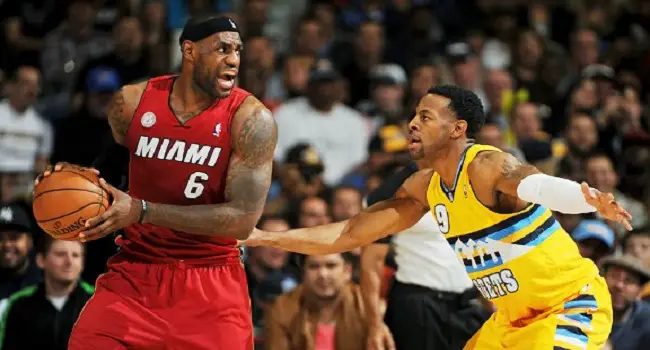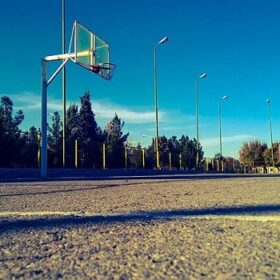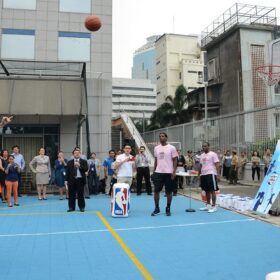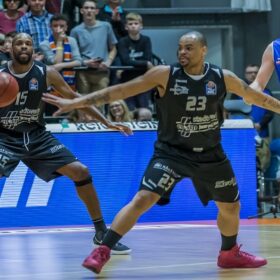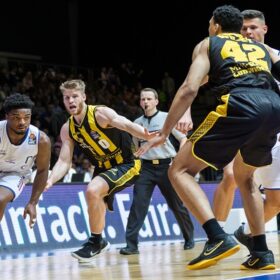It is believed that the dynamics of Basketball changed forever since the inception of the Hand checking NBA rule in 2004. The ball handlers employ this form of defense to manage their movements and control their speed. This rule limited the approach and power of the defender and gave a massive edge to the offensive player. And boy did they take full advantage of it!
Earlier, the defenders had complete autonomy to touch the players and restrict the movement of the player they were guarding. It wasn’t like the NBA administration allowed a street fight, but defenders were allowed to reach out for the offensive player and touch his wrist, arm, or even leg. But according to Hand checking NBA rule, this is now accounted as a foul.
You may say that this rule was the culmination of the Basketball’s lifetime as a sport. If you are an avid fan of Basketball or even play some yourself, you will see how Handchecking NBA rule transforms the paradigm of the game you had anticipated.
Now you can better comprehend the playing strategies defenders opt for and how their game plans are very considerate of offensive players to avoid any criminal defense.
What Is Hand Check In The NBA?
If this all is getting too technical for you and you are not well acquainted with all these basketball terms, we are throwing at you, let’s simplify this rule. So basically, the Hand checking rule NBA precludes a player from using his hand to hinder the movement of his opponent by reaching out to him with his hand. If the player does this otherwise, it will be considered as a foul, and there will be repercussions.
So, as a defender, it may make things complicated and challenging for you. In the end, you have to defend using your sharp reflexes, movements, and wits. Even the most minor illegal contact can put your entire game in jeopardy, and you wouldn’t want to turn the tables based on a minor technicality or an inadvertent contact with the offensive player.
Read about the fouls that are charged and observe how it is credited as a personal foul, which is later counted in the team foul count. The rule strictly pertains to the defender when he engages in an illegal contact or impedes the movement of the ball-handler.
This renders the ability of powerful, strong, and tall players completely redundant as it limits the effective use of their potential. The short-height, agile and dexterous players have become increasingly popular, and they now steal the spotlight as the defenders are now impuissant in front of them.
What Is The Official NBA Rule For Hand Checking?
“A player shall not hold, push, charge into, impede the progress of an opponent by extending a hand, arm, leg or knee or by bending the body into a position that is not normal. Contact that results in the re-routing of an opponent is a foul which must be called immediately.”
Contact initiated by the defensive player guarding a player with the ball is not legal. This contact includes, but is not limited to, forearm, hands, or body check.”
(Official NBA Rule Book, Rule No.12B, Section I)
If you follow this link, you will realize that in addition to these clauses, there are many genuine exceptions that eliminate any prevailing bias and prejudice against defenders from guarding against the offensive player. This rule allows the defensive player to engage in contact with the offensive player via his elbow bent or forearm, but only when the player is in the Lower Defensive Box.
Penalty For Hand Checking
If a player commits hand-checking, he will be charged with a personal foul. If the team collectively commits more than five personal fouls, than it adds to an advantage for the other team. The opposing team is granted the opportunity to shoot free throws.
If one single player commits a total of 6 personal fouls, he will be disqualified from the match as he will “foul-out” of the match. He would have to watch the match from the bench, and in more dire cases, the referee can expel him from the stadium too.
History Of Hand Checking NBA
NBA decided to introduce this rule in the 2004-2005 basketball season. To curtail the implications of this rule, clarify blocking fouls, and the defensive three-second rule was implemented. It was claimed that these rules were introduced to “open up the game”.
Why Is Hand Checking Rule Is Important?
Many sports experts deemed the game softer after the Handchecking NBA rule was imposed. They believed that games used to be tougher and brutal in the ’90s and 80’s, and this captured the essence of the game.
Analysts claimed that the referee wanted to alleviate the aggression filled up in the court and would charge players with fouls on petty offenses. You may believe that the NBA wants players to be less physical and avoid any major injuries or hostilities, but the hand-check rule defines the real wit and potential of the player.
Conclusion
If you have been following Basketball since like forever, you may see the lucid and conspicuous change in the dynamics of the game after the Hand checking rule NBA was imposed. It seems like Basketball has lived through two different eras and has survived them both.
This rule does attenuate the physicality and dexterity of defenders, so they have to come up with a stringer and a smarter game plan to conform with rules of this clause and simultaneously show the offensive player what they are made of.
If you are an active player, make sure you have a good know-how of this rule because you would want to compromise your performance solely based on clause you didn’t try to understand fully. Consult your coach or the referee, and understand your limitations and restrictions as a defender. On the court, it will be you and the player, and no one in between. That will be the defining moment of your career as a defender. So, play it wisely!

